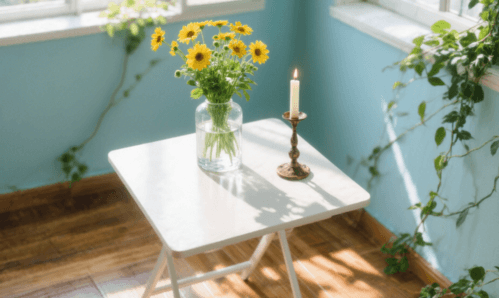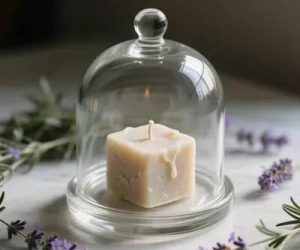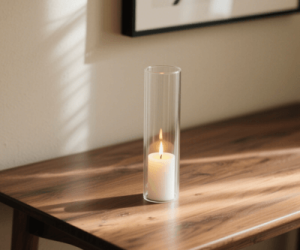Elegant Glass Terrariums: A Guide to Creating Indoor Green Spaces

Understanding Terrariums: The Basics
Terrariums, often referred to as miniature ecosystems, have a rich history that dates back to the early 19th century. They were first popularized by botanist Nathaniel Bagshaw Ward, who created a glass container to cultivate ferns and other delicate plants. This innovation allowed for the preservation and display of plants in a contained environment, making it easier for plant enthusiasts to enjoy greenery indoors.
There are two primary types of terrariums: open and closed. Open terrariums typically consist of an uncovered container that allows for good air circulation. They are ideal for plants that thrive in drier conditions, such as succulents and cacti. Closed terrariums, on the other hand, function more like miniature greenhouses, providing a humid environment suitable for tropical plants, ferns, and mosses. The choice between open and closed terrariums largely depends on the specific plants one wishes to cultivate, as each type provides different environmental conditions.
The benefits of incorporating terrariums into indoor spaces are numerous. They not only enhance the aesthetic appeal of a home but also contribute positively to indoor air quality. The plants inside a terrarium perform photosynthesis, which helps remove toxins from the air while simultaneously releasing oxygen. Additionally, terrariums can serve as a calming presence, bringing nature indoors and providing an engaging hobby for those interested in gardening.
To create a terrarium, several materials are required: a suitable glass container, potting soil, and, of course, the selected plants. Optional elements such as decorative stones, charcoal for drainage, and miniature figures can further personalize the design. Understanding these basics lays a solid foundation for anyone interested in creating their own elegant glass terrarium, allowing them to enjoy a beautiful and functional green space.
Choosing the Right Plants and Materials
Creating an elegant glass terrarium begins with careful selection of plants and materials that suit the specific environment within the container. The choice of plants largely depends on several factors, including light conditions, humidity levels, and the size of the terrarium. It is essential to understand the unique needs of various plant species to ensure a thriving indoor green space.
For open terrariums, which typically have better air circulation, consider plants such as succulents and cacti that require less humidity and prefer bright, indirect light. Varieties like Echeveria and Sedum are particularly popular due to their diverse colors and shapes. In contrast, closed terrariums create a more humid environment, making them ideal for moisture-loving plants. Ferns, such as the Boston fern or maidenhair fern, as well as miniature tropical plants like the nerve plant (Fittonia) or peace lily, thrive in these conditions.
When selecting plants, it is also vital to consider their growth habits, textures, and colors. Pairing plants with varying heights and leaf shapes can create visual interest, while contrasting colors can enhance the overall aesthetic of the terrarium. For example, combining the lush green of ferns with the vibrant hues of a small bromeliad not only adds depth but also showcases the beauty of indoor plant life.
In addition to the plants, the materials used in constructing the terrarium play a crucial role. A proper drainage layer is essential to prevent root rot. Materials such as pebbles, charcoal, and gravel can be used effectively. Furthermore, choosing the right soil—such as a cactus mix for succulents, or peat-based soil for tropical plants—is equally important. Decorative elements such as stones, small figurines, or driftwood can enhance the visual appeal, turning your terrarium into a captivating centerpiece. Overall, the right combination of plants and supporting materials will ensure a successful and beautiful indoor garden.
The Step-by-Step Process of Creating a Terrarium
Creating a glass terrarium is an enjoyable and rewarding endeavor that allows you to bring a touch of nature indoors. The first step in crafting your own indoor green space is selecting the right glass container. There are numerous options, such as open or closed terrariums, with various shapes and sizes. Your choice should depend on the types of plants you wish to grow and the aesthetic you desire. For example, succulents thrive in open containers due to their need for good air circulation, while ferns prefer a humid environment, making closed terrariums more suitable.
Once you have your container, prepare the base by adding a layer of gravel. This layer aids in drainage, preventing water from accumulating at the bottom of the terrarium, which can lead to root rot. It is advisable to add activated charcoal on top of the gravel to filter the air and keep the space fresh. Following the charcoal, layer in high-quality potting soil that provides the necessary nutrients for your plants. Aim to have a soil depth of at least two to three inches, allowing adequate room for plant roots to grow.
Next, it’s time to arrange the plants. Choose a variety of plants that complement each other in size, color, and care needs. When placing the plants in the soil, ensure that you maintain sufficient space for their growth. As a tip, position taller plants in the background and smaller ones in the foreground for a visually appealing arrangement. After planting, give your terrarium a light watering. Be cautious not to overwater; a small amount is usually sufficient, especially for closed terrariums where moisture is retained.
Finally, place your terrarium in an appropriate location, away from direct sunlight but providing ample brightness. Monitor the conditions regularly, and make adjustments as needed. With proper care, you can enjoy your beautiful glass terrarium as a thriving indoor garden. Throughout this process, keep in mind common mistakes, such as overcrowding plants or neglecting drainage, as they can hinder the health of your terrarium.
Care and Maintenance of Your Terrarium
Once you have successfully created your elegant glass terrarium, the key to its longevity lies in proper care and maintenance. Understanding the specific needs of the plants you have chosen is critical to creating a healthy indoor green space. First and foremost, consider the light conditions. Most terrarium plants thrive in indirect sunlight; therefore, placing your terrarium near a window that provides filtered light is ideal. Avoid direct sunlight as it can lead to overheating and promote unwelcome algae growth.
Watering is another critical aspect of terrarium care. Since these indoor gardens are enclosed, they create a miniature ecosystem that often requires less frequent watering than standard houseplants. Typically, it’s best to water your terrarium every couple of weeks; however, this frequency can vary based on the humidity of your environment. Always check the soil moisture before watering; if the soil feels damp, it’s advisable to wait. Overwatering can lead to root rot and other issues that may compromise your plants’ health.
Maintaining humidity levels is essential, particularly for tropical species. If you observe any signs of distress, such as mold growth or drooping leaves, it could indicate that the humidity is either too high or too low. Addressing these problems may involve adjusting the watering schedule or allowing the terrarium to air out temporarily. Additionally, pruning your plants regularly will help maintain their shape and promote healthy growth. When you notice that some plants are becoming too lush, trim them gently to prevent overcrowding.
Cleaning the glass walls of your terrarium can enhance its aesthetic appeal and ensure optimal light penetration for the plants. Every few months, take the time to wipe down the interior and exterior with a damp cloth. Refreshing your terrarium periodically by replacing the substrate or adding new plants can reinvigorate the ecosystem, making it a vibrant focal point in your home.




